146 Letter from Evinç Doğan
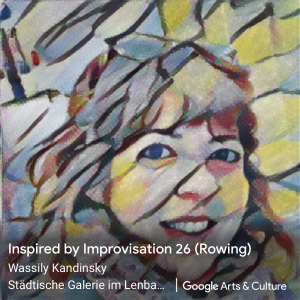
Photo credit: Hilal Erkuş, Belgrade (2019). Edited in Google Arts & Culture App by Evinç Doğan (2020).
Episode 1: Prologue
My academic journey might sound non-conventional to many of you as I follow an unusual path crossing over different disciplines. Although I was very much into psychology and sociology, it was not a surprise when I started undergraduate studies in Tourism Management at Boğaziçi University. My memories of being a toddler involve running in the corridors of the Aydın Tourism and Hotel Management School, climbing up the fig trees, the sound of the typewriters and the smell of spirit duplicator for low-volume printing. I was lucky to be born in the 1980s, the times of perhaps the most bizarre fashion, nothing but unforgettable songs, the release of the Commodore 64 (I only got a family PC at the age of 19, Windows 98 was the operating system, floppy disks were in use to save your work).
Episode 2: The journey
More recently, I returned to my alma mater Boğaziçi University. I would like to tell you the story of what happened then and what happens now as a young scholar, as a woman, and simply as Evinç. It was not a surprise, again, when I chose History of Architecture for my Master’s studies. My father started his academic path in architecture. He quitted. Then he started sociology and lastly came to the tourism field. I started with tourism, then came to the history of architecture and eventually found my own path: Cultural Heritage Management. “Everybody has talent, it’s just a matter of moving around until you’ve discovered what it is,” says George Lucas.[1].
Photography and cinema were of great interest to me, they still are! I will come back to photography later on. What comes next was to find something that I actually seem to be extremely good at as Lucas suggested, bringing all my interests to an intersection such as urban tourism and visual culture. For my research, I was interested in the cities. I was an urban girl after all. The whole city was my research lab where I gazed upon people, places, buildings, streets, happenings, events, and images. In Paris, I was a “flâneuse”[2] walking in the footsteps of Walter Benjamin and admiring the arcades. Inspired by Lauren Elkin, I walked because “it was like reading.”[3] In London, I was a commuter sitting in the tube and gazing at beautifully colorful crowds “minding the gap” getting on the train at Oxford Circus. In Belgrade, I was the urban explorer walking into abandoned industrial sites searching for the ghosts in the haunted spaces. In Berlin, I was biking all along the industrial heritage route and having a time travel back to the darkness and lightness of “Electropolis”. In each city, my camera and the words of Susan Sontag[4] guided me through this journey:
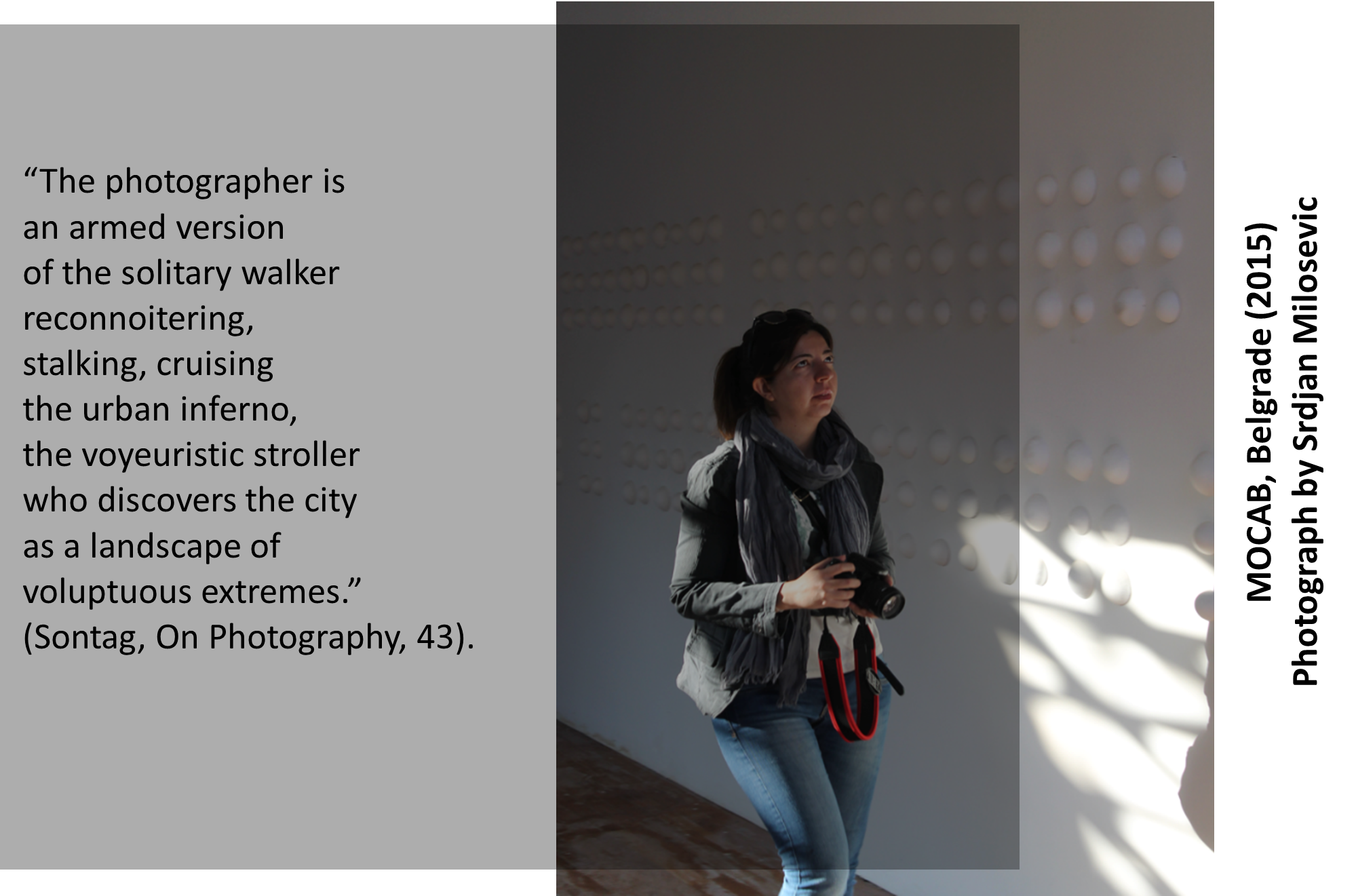
Episode 3: Doing photography
Anybody likes to take photographs, to turn moments into unforgettable events. Now, anybody can take millions of digital shots with a mobile phone, which is taken instantly but also can be deleted instantly, as if erasing the memory. For me doing photography is a tool for embodied practice beyond capturing the moment. It is a way of taking field notes, visually recording data, so to speak writing with light. At the same time, it is a mediated experience, a way of ‘sensory ethnography’[5] through being in space and time.
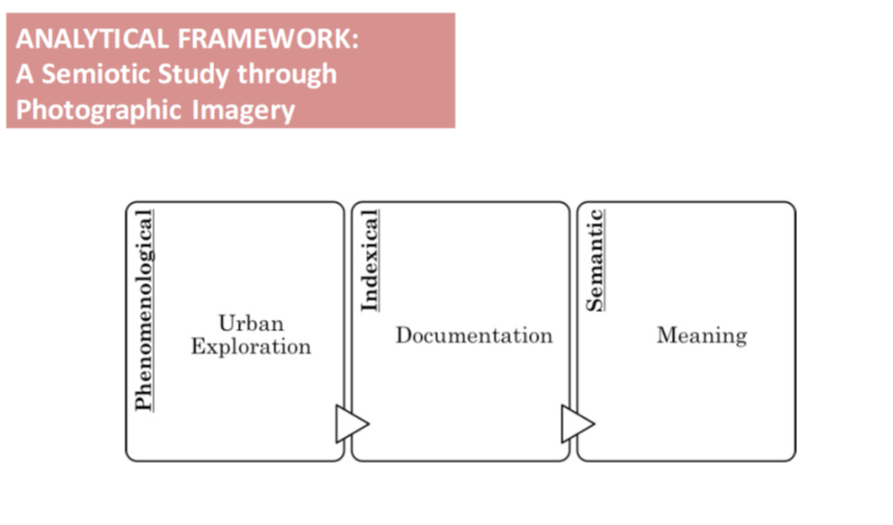
I started photography with an analog camera borrowed from my sister when we were both university students. Instead of the smell of the spirit duplicator in my childhood, it was the smell of the developer in the darkroom in my memories then. I embarked on my photographic journey as a member of the Boğaziçi University Photography Club (BUFOK). Later, I found myself walking in the streets and exploring the urban landscapes as a solo traveler armed with a camera as Sontag described.
Navigating the industrial heritage route in Berlin[6]
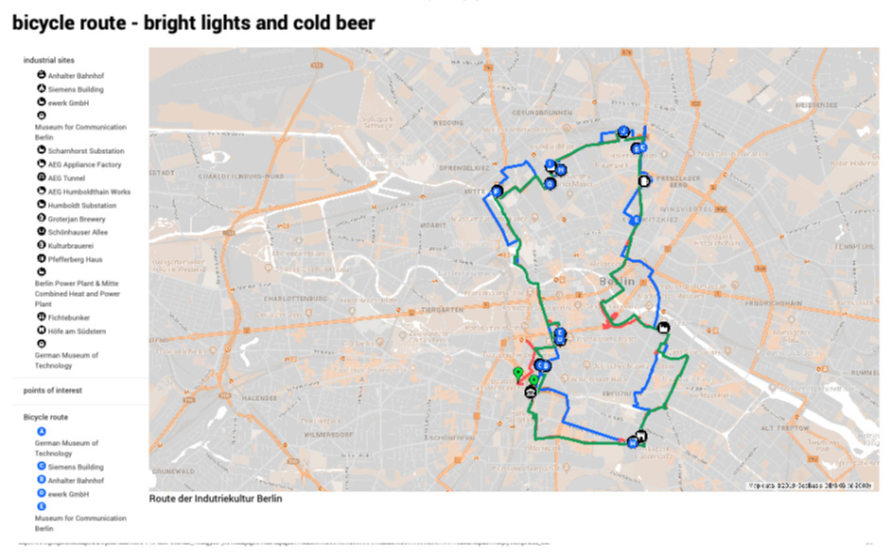
Contact sheet of the industrial sites in Belgrade
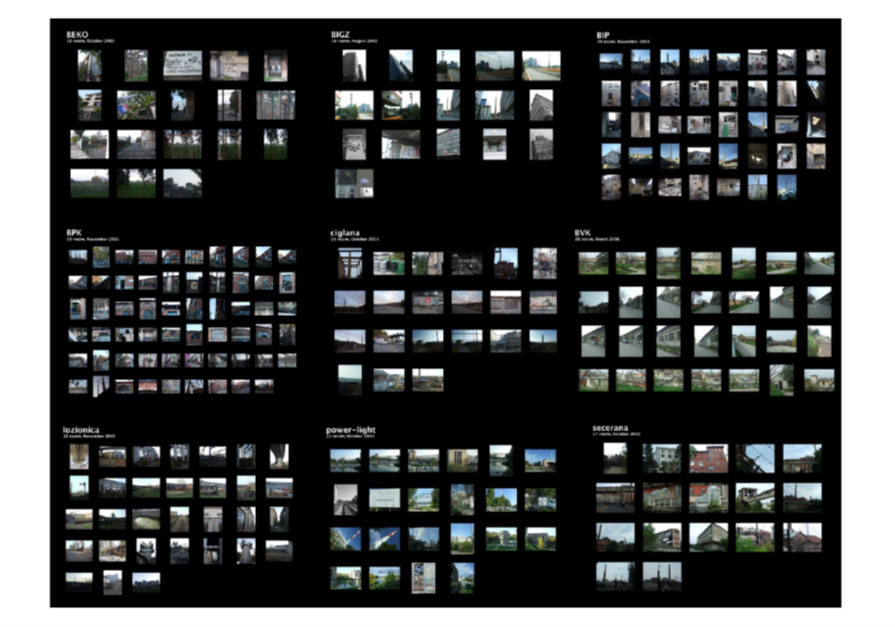
I embraced photography as a research method to explore old industrial sites. The Energy Museum in the former power plant of Silahtarağa in Istanbul (known as Santralistanbul) was my first-time encounter. Then it was a Ph.D. research in Lucca, in the old tobacco factory. London was full of opportunities presenting traces of the industrial revolution. As I moved to many places, I dragged my suitcase and my camera with me to Belgrade, Berlin and Istanbul tracing industrial heritage.
Episode 4: To be continued
Yet, here I am. I tried to find my way, reach as far as I can get, crossing borders and moving from one country to another like a nomad academic. I tried to find myself, what I want, what I like… I knew I chose a difficult path, with hurdles, ups and downs, but also full of rewards and nice people to work with, to have fun with, to walk with you along this long journey. I met wonderful women academics who encouraged me to keep walking on my path. Here is what I learned:
It is ok to fail. It means you tried. Take lessons from your mistakes and try again.
It is ok to get pissed when the second reviewer comments negatively on your article. You know you can do better, so do it.
It is ok to get lost. You will find your way, perhaps a better way.
Be brave, leave out of your comfort zone and take risks.
Try new things, and change your perspective, think out of the box.
Be curious and ask questions.
Travel as long as you find the opportunity.
Feed yourself with good food for your body and do not skip the food for thought.
Keep walking!
Evinç Doğan
Boğaziçi University, Istanbul, Turkey
- Janet Riehecky, George Lucas: An Unauthorized Biography, (Chicago: Heinemann Library, 2001), 14. ↵
- “Flâneuse [flanne-euhze], noun, from the French. Feminine form of flâneur [flanne-euhr], an idler, a dawdling observer, usually found in cities” in Lauren Elkin, Flâneuse: Women Walk the City in Paris, New York, Tokyo, Venice, and London, (New York: Farrar, Straus and Giroux, 2016), 7. ↵
- auren Elkin, Flâneuse: Women Walk the City in Paris, New York, Tokyo, Venice, and London, (New York: Farrar, Straus and Giroux, 2016), 21. ↵
- Susan Sontag, On Photography, (New York: Rosetta Books LLC, 2005), 43. ↵
- Sarah Pink, “Multimodality, multisensoriality and ethnographic knowing: social semiotics and the phenomenology of perception,” Qualitative Research 11, (2011): 261-276. ↵
- Evinç Doğan, “Tracing Industrial Heritage: The Case of Berlin Bicycle Route,” TOLEHO 1, (2019): 59-67. ↵

